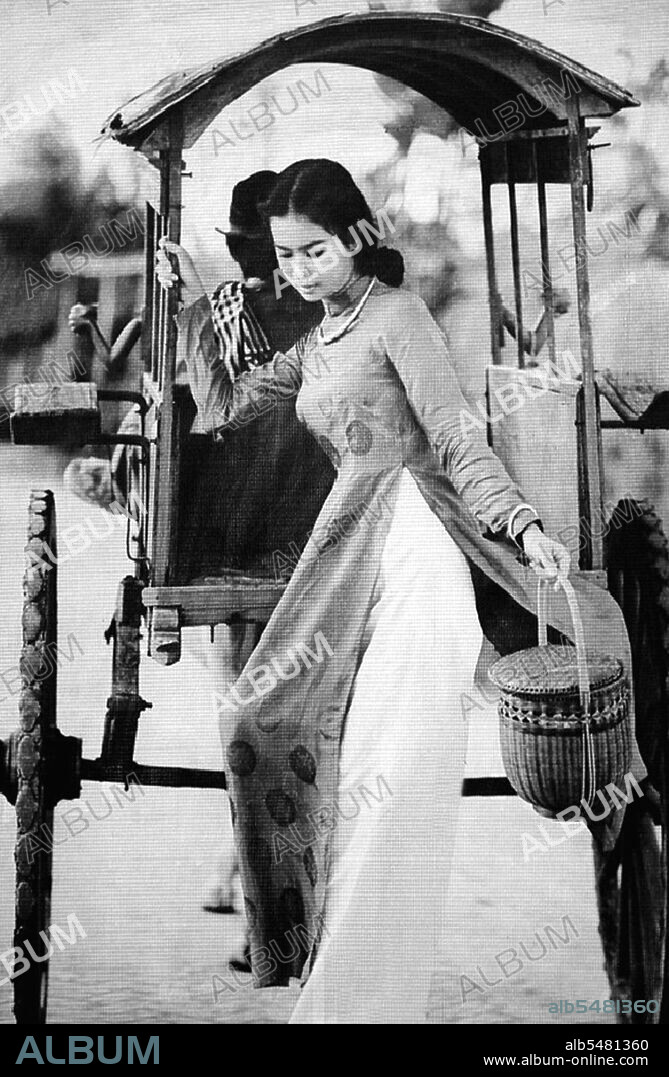alb5481360
Vietnam: Young woman in an ao dai dress descending from a covered pony cart, Saigon,1950s

|
Add to another lightbox |
|
Add to another lightbox |



Buy this image.
Select the use:

Title:
Vietnam: Young woman in an ao dai dress descending from a covered pony cart, Saigon,1950s
Caption:
The ao dai (Vietnamese: áo dài) is a Vietnamese national costume, now most commonly for women. In its current form, it is a tight-fitting silk tunic worn over pantaloons. The word is pronounced ow-zye in the north and ow-yai in the south, and translates as 'long dress'. The name áo dài was originally applied to the dress worn at the court of the Nguy?n Lords at Hu? in the 18th century. This outfit evolved into the áo ngu thân, a five-paneled aristocratic gown worn in the 19th and early 20th centuries. Inspired by Paris fashions, Nguy?n Cát Tu?ng and other artists associated with Hanoi University redesigned the ngu thân as a modern dress in the 1920s and 1930s. The updated look was promoted by the artists and magazines of T? L?c van doàn (Self-Reliant Literary Group) as a national costume for the modern era. In the 1950s, Saigon designers tightened the fit to produce the version worn by Vietnamese women today. The dress was extremely popular in South Vietnam in the 1960s and early 1970s, frowned upon as frivolous and borgeois in the North between 1952 and 1986, but is today increasingly popular nationwide, having become once again a symbol of Vietnamese nationalism and Vietnamese female beauty.
Credit:
Album / Pictures From History/Universal Images Group
Releases:
Model: No - Property: No
Rights questions?
Rights questions?
Image size:
3356 x 5136 px | 49.3 MB
Print size:
28.4 x 43.5 cm | 11.2 x 17.1 in (300 dpi)
Keywords:
AO DAI • ASIA IMAGES • ASIA PICTURES • ASIA • ASIAN IMAGE • ASIAN IMAGES • ASIAN PICTURES • ASIAN • CLOTHES • CLOTHING • CLOTHINGS • COSTUME • DRESS • DRESSED • FASHION • GARMENT • GRAHAM GREENE IN SAIGON • HABIT • HCMC • HISTORIA UNIVERSAL • HISTORIA • HISTORICAL IMAGES • HISTORICAL PICTURES • HISTORICAL • HISTORY IMAGES • HISTORY PICTURES • HISTORY • HO CHI MINH CITY • INDUMENTARIA • KINH • MODA • MUJER • ROBE • SÀI GÒN • SAIGON • STYLE • SUIT • THÀNH PH? H? CHÍ MINH • VIETNAM • VIETNAMESE • WOMAN'S • WOMAN • WOMEN'S • WOMEN • WOMENS
 Pinterest
Pinterest Twitter
Twitter Facebook
Facebook Copy link
Copy link Email
Email
